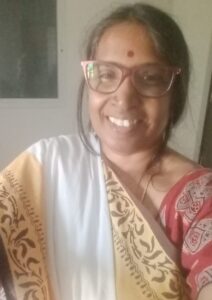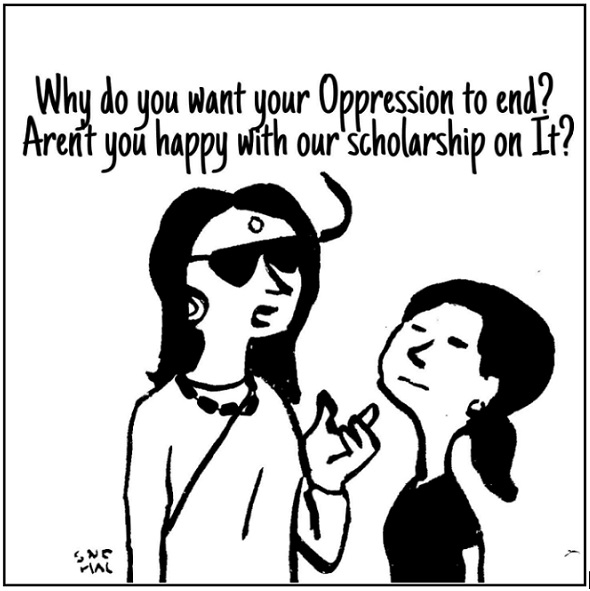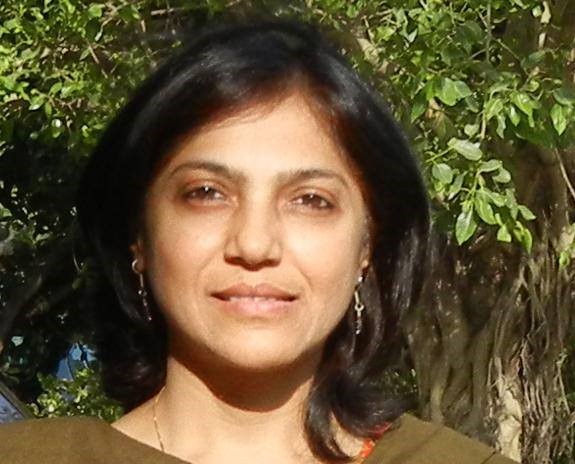Anu Ramdas
 Caste is a word, and like any word is a single unit of language; when spoken or written it conveys some agreed-upon meaning. The key here being the agreed-upon part. Is there a universal agreed-upon meaning when the term caste is rendered as a textual or audible word?
Caste is a word, and like any word is a single unit of language; when spoken or written it conveys some agreed-upon meaning. The key here being the agreed-upon part. Is there a universal agreed-upon meaning when the term caste is rendered as a textual or audible word?
A word is often an abstraction of several complex layers of meanings. The meaning of words is both explicit and implicit and therefore prone to be ambiguous as the intended meaning by the speaker or writer and the perceived meanings by the listeners and readers can vary widely and no clear or fixed definitions become possible. Further, meaning is heavily dependent on the historical and the current contexts of users of the word. To be very clear, knowledge about caste and the meaning of the word caste are related but different, here I am trying to understand caste as a textual label.
Let me try to illustrate this with a recent conversation with a young neighbor:
“I am Rajput. I was engaged, it was arranged.”
“Rajputs, you know, have arranged marriages.”
The young woman depends on my prior awareness of the word Rajput and its agreed-upon meaning and cultural norms. As she does not elaborate that Rajput is a word to indicate the caste she belongs to. Nor did I ask what that term meant. I would have to use several sentences to explain how this communication unfolds. Briefly, the term retrieves stored information – a combination of visual, textual, and audio repositories that my memory has in relation to this single word.
In spoken language, information is exchanged between the speaker and the listener. In this instance, the exchange is between two adults whose society is ordered by a specific kind of stratification “a parcelling of humans” unique to the subcontinent. Stating that Rajput is a caste identifier felt redundant to her. She assumed that I knew that it was a caste.
How does shared or agreed-upon meaning arise? Would she recognize my caste in the same way? Would just a word do? The point is I do not have any real shared understanding of the term Rajput – I have some information about it from popular culture, to be very precise it comes from comic books that I read as a child. Additional details from text books and so on. I don’t think I had met a Rajput until college, where the narrative I had read in comic books was reinforced when a classmate described how her sister was ostracized for marrying outside their Rajput caste. Beyond this, Babasaheb’s reference to sati and his theory of the surplus man constitutes what I know of that caste.1
Basically, I have no lived experience of this caste group as it is not a part of the caste structure in the region that I come from.
When the above spoken conversation is written, the impact is different as its audience can be anybody reading the quoted conversation with or without the contextual frame of a caste society.
The sentence ‘I am Rajput’ appears as a form of self identification that does not explicitly imply known identifiers such as religion, race, class, or gender.
The following sentence “Rajputs, you know, have arranged marriages” appears to be a group assertion. Both at the individual and group levels, the word is not an explicit identifier of religion, race, class or gender but something else.
From these two sentences we can safely infer that caste as a word is used as an individual’s as well as a group’s identity. But we cannot use anecdotal conversations between two individuals to make any generalizable statements for it would be surely contested. To determine if caste is an identifier for all or only some persons born and raised in the subcontinent, we have to examine if caste is a legal identity, which would then allow for some observations to be made about the structure of the caste society.
Caste is indeed a legal or administrative identifier for people categorized as SCs. It is not a legal identifier for people categorized as STs and OBCs, while people categorized as ‘general category’ have a negative association – they are not SCs, they are not OBCs, they are not STs and their caste is not mentioned and therefore their caste is not a legal identifier (?). But their caste identity is unequivocally derived as distinct from SCs and OBCs. This set of facts about the word caste is verifiable legally by any interested party and therefore used liberally for all kinds of generalizations by academics (an accountable community of users).
But how does an individual’s caste identity translate into these three mega categories? How does a group’s caste identity translate into one of these three categories?
‘I am Rajput’ has to be now read as ‘I am general category’ – a category that negates caste identification.
The substitution of caste with category will get us these kinds of formulations: “General category, you know, have arranged marriages.”
Can the term caste be substituted for a category of castes and vice versa and still have the same meaning?
How pervasive is this substitution? Is it done as a shorthand or intellectual lethargy or worse: wilful illogicity? How does it impact the observation and study of the caste society?
If the word caste itself is an abstraction, then the categories SCs, OBCs and GCs are uber abstractions of that term. I will attempt to think through the processes of abstraction of the term caste in a subsequent article.
===
SC – Scheduled Castes; OBC – Other Backward Classes; ST – Scheduled tribes; GC – General category
- Ambedkar B. R. Castes in India: Their mechanism, genesis and development. Indian Antiquary, vol XLI (1917).
Note: This article is a part of a forthcoming book, please get in touch with the author before using any part of the article.
~~~
Anu Ramdas is one of the founder members of Round Table India, Savari and Prabuddha (PJSE), in her day job she is a computational biologist. email: timeandus@gmail.com


